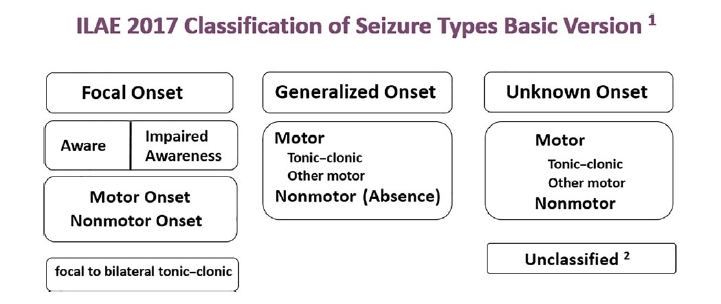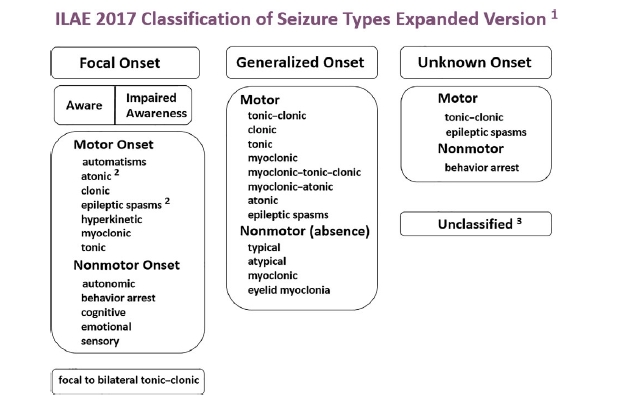
The International League Against Epilepsy (ILAE) has recently revised its classification of seizures.
The update, the first in 30 years, includes many types of seizures not captured in the older version, allowing doctors and patients to make more informed decisions concerning treatment. Another problem the new classification aims to tackle is the names of some seizure types which were difficult to understand and apply. It is hoped that the changes will help make diagnosing and classifying seizures more accurate and easier.
The classification also provides common terminology for people with epilepsy and the general public to describe seizures ensuring that everyone can discuss seizures using a common language.
The new classification represents the biggest change since the 1980s when terms like 'petit mal' and 'grand mal' were replaced by 'partial' and generalised'. The new classification will lead to some new terminology being used. Below is a brief summary.
The New Classification
The new basic seizure classification is based on 3 key features:
1. Where the seizures begin in the brain
The first step is to determine where the seizure begins in the brain. This can influence the choice of medication, possibilities for epilepsy surgery and possible causes.
Seizures can now be Focal (previously called partial seizures, those starting on one side of the brain) or Generalised (both sides of the brain are involved at the onset).
In addition, a seizure that starts in one side or part of the brain and spreads to both sides is now to be called a Focal to Bilateral seizure (previously called a secondary generalized seizure). There are also classificatiosn covering seizures of unknown onset and unclassified seizures.
2. Level of awareness during a seizure
The second step is to determine whether a person is aware during a seizure. So if a person is fully aware during a seizure, it would be termed a focal aware seizure (this replaces the term simple partial). If awareness is impaired during a seizure, it would be called focal impaired awareness (formerly called a complex partial seizure). All generalised seizures affect awareness, so no new terms are introduced to describe theme here.
3. Other features of seizures
Many other symptoms may occur during a seizure. In the new system, seizures are separated into groups that involve movement. In focal seizures, Motor seizures means that some type of movement (e.g. twitching, jerking, or stiffening movements of a body part or automatisms) occurs during the seizure while non-Motor means that symptoms such as changes in sensation, emotions, thinking occur).
Generalized Seizures can also be motor or non-motor. For example, the generalized tonic-clonic seizure term is still used to describe seizures with stiffening (tonic) and jerking (clonic). Other seizure types have not been changed in this section but some new terms are added. Generalized non-motor seizures are primarily absence seizures corresponding to the old term "petit mal." These seizures, common in children, involve brief changes in awareness, staring, and sometimes repeated movements like lipsmacking.

In addition to the above basic system, there is also an Expanded Classification that adds more seizure types as subheadings. See below.

It is interesting to note that the new classification does not make references to auras and also the word 'convulsion' is dropped from the terminology.
It is hoped that the new classification will have many benefits in the long term including greater public understanding, better communication and making it easier to do research.
However, changing terminology can also be confusing. If you have any questions about the new terminology or how older terminology relates to this new system, please get in touch with Epilepsy Ireland.
Further information:
A series of papers have been published in the scientific journal Epilepsia, which are publicly available in full.
- ILAE classification of the epilepsies: Position paper of the ILAE Commission for Classification and Terminology
- Operational classification of seizure types by the International League Against Epilepsy: Position Paper of the ILAE Commission for Classification and Terminology
- Instruction manual for the ILAE 2017 operational classification of seizure types
